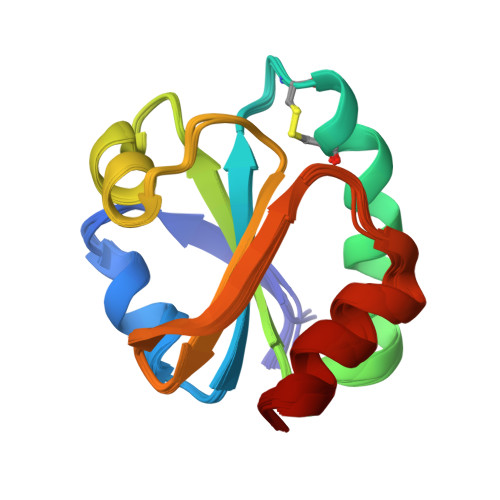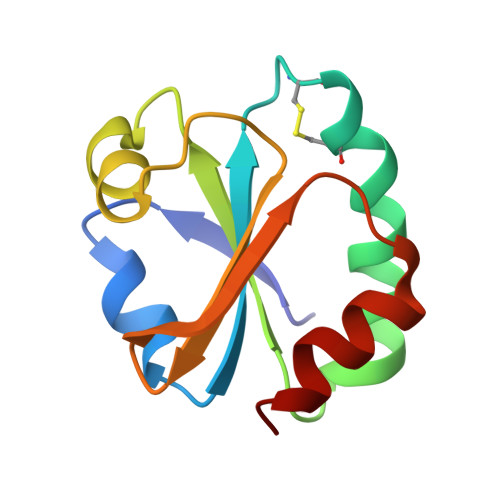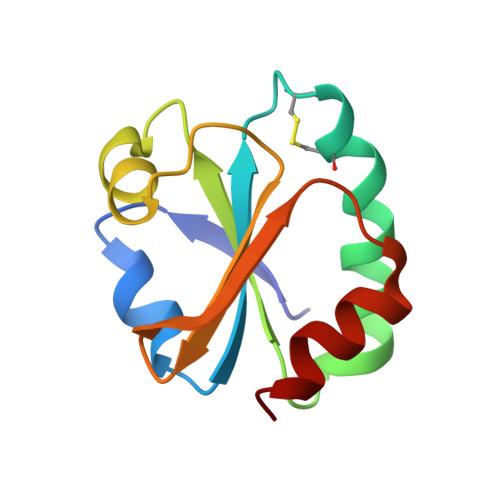Conformational fluctuations coupled to the thiol-disulfide transfer between thioredoxin and arsenate reductase in Bacillus subtilis.
Li, Y., Hu, Y., Zhang, X., Xu, H., Lescop, E., Xia, B., Jin, C.(2007) J Biological Chem 282: 11078-11083
- PubMed: 17303556
- DOI: https://doi.org/10.1074/jbc.M700970200
- Primary Citation of Related Structures:
2GZY, 2GZZ, 2IPA - PubMed Abstract:
Arsenic compounds commonly exist in nature and are toxic to nearly all kinds of life forms, which directed the evolution of enzymes in many organisms for arsenic detoxification. In bacteria, the thioredoxin-coupled arsenate reductase catalyzes the reduction of arsenate to arsenite by intramolecular thiol-disulfide cascade. The oxidized arsenate reductase ArsC is subsequently regenerated by thioredoxin through an intermolecular thiol-disulfide exchange process. The solution structure of the Bacillus subtilis thioredoxin-arsenate reductase complex represents the transiently formed intermediate during the intermolecular thiol-disulfide exchange reaction. A comparison of the complex structure with that of thioredoxin and arsenate reductase proteins in redox states showed substantial conformational changes coupled to the reaction process, with arsenate reductase, especially, adopting an "intermediate" conformation in the complex. Our current studies provide novel insights into understanding the reaction mechanisms of the thioredoxin-arsenate reductase pathway.
Organizational Affiliation:
Beijing Nuclear Magnetic Resonance Center, College of Chemistry and Molecular Engineering, Peking University, Beijing 100871, China.


















